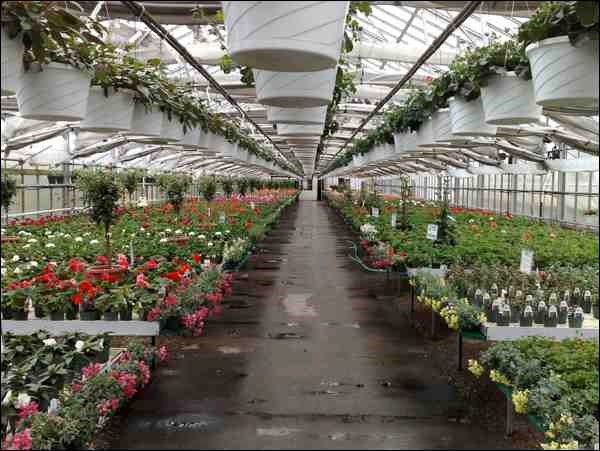Spring has to finally be here; it's May after all. And with spring, it's time to visit garden centres and nurseries in search of bedding plants. Bedding plants are usually annuals or very tender perennials that last only the season here in Saskatchewan. They are used to add swaths of colour to flowerbeds or draw your eye to containers. Using bedding plants of the edible kind gives you a head-start in your vegetable garden to get an earlier harvest or, in some cases, to have any harvest at all - direct sowing of some vegetables like onions and lettuce works but tomatoes, peppers and artichokes must be started off as seedlings.
As with many things, gardening included, success starts with quality. Look for short, stocky, dark green plants. Avoid spindly, anaemic-looking ones. And bigger is not necessarily better. Smaller plants suffer less transplant shock since their root system is likely better balanced to the above ground portion. Similarly with bedding plants already in flower - these have already shifted from vegetative growth to reproduction and have a harder time establishing in the ground.
Avoid root-bound bedding plants. Whether you're looking at six-packs or two-inch pots, carefully remove a representative plant from its container. The root ball should hold together but the root mass should not be so dense you cannot glimpse some media on the sides.
In the greenhouse, bedding plants have been living the soft life: high humidity, regular water, bright light, still air and warm temperatures. They are not ready for the harsh reality of outdoors in Saskatchewan. Full sun and wind can kill them if they haven't been "hardened off" or acclimatized. Do this by putting them outside during the daytime in a shady, sheltered site when air temperature is above 15 C. Bring them in at night. Over a period of a week to 10 days, gradually expose them to more light and wind. Make sure the soil does not dry out. They may need watering two or more times per day, especially on bright, warm, breezy days. But do not allow them to be waterlogged. Roots need oxygen as much as water and waterlogging can lead to root death and rotting.
The May long weekend is the typical date for putting out bedding plants on the Prairies. But some hardier plants like cole crops (cabbage, broccoli, cauliflower), onion, pansy, artemisia and snapdragon can be planted one to two weeks earlier. However, warm season plants like tomatoes, peppers and cucumbers should only be planted when you are completely confident that all danger of frost is past (i.e. last week of May or even early June).
Plant late in the day or on a cloudy day to reduce transplant shock. Prepare the planting area by loosening up the soil with a rototiller, spade or hand tool. Make a hole slightly larger than the root ball then gently firm the soil around the plant once in the ground. Do not break up the root ball even if it is root bound - when you do this, you can destroy much of the existing system putting further stress on the plant and delaying establishment. Water seedlings in well. Many ornamental annuals respond well to pinching by producing a bushier plant. But do not pinch vegetables. Remove any open flowers to channel energy into establishing a robust root system. After a week in the ground, give your bedding plants a half-strength fertilizer solution (e.g. 20-20-20) to give them a boost.
- This column is provided courtesy of the Saskatchewan Perennial Society (www.saskperennial.ca; [email protected]). Check out our bulletin board or calendar for upcoming horticulture events in May.c




